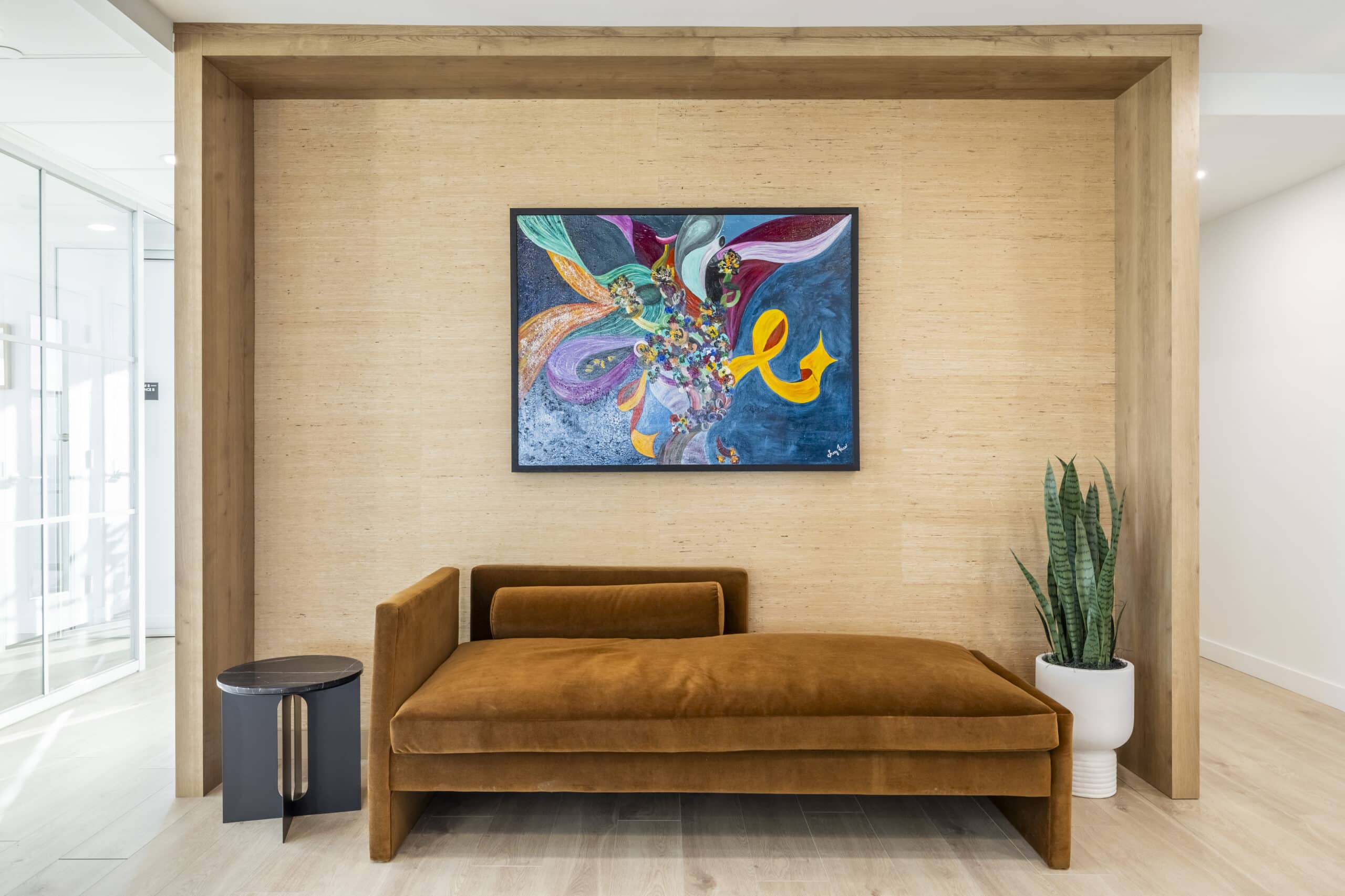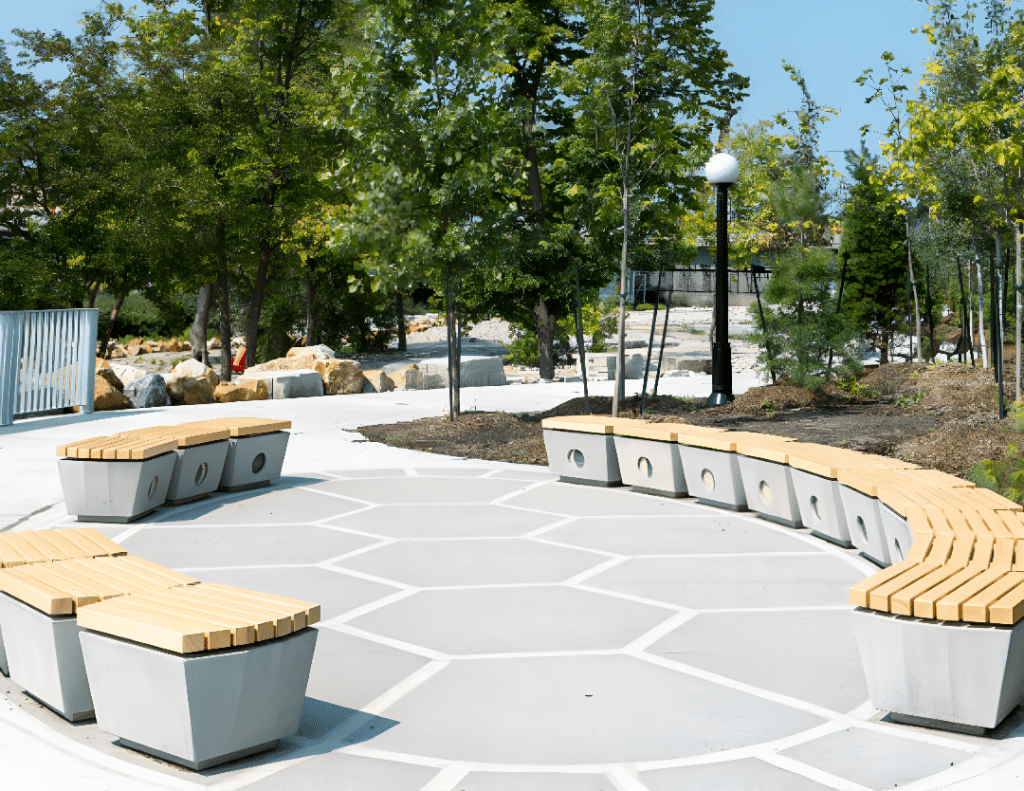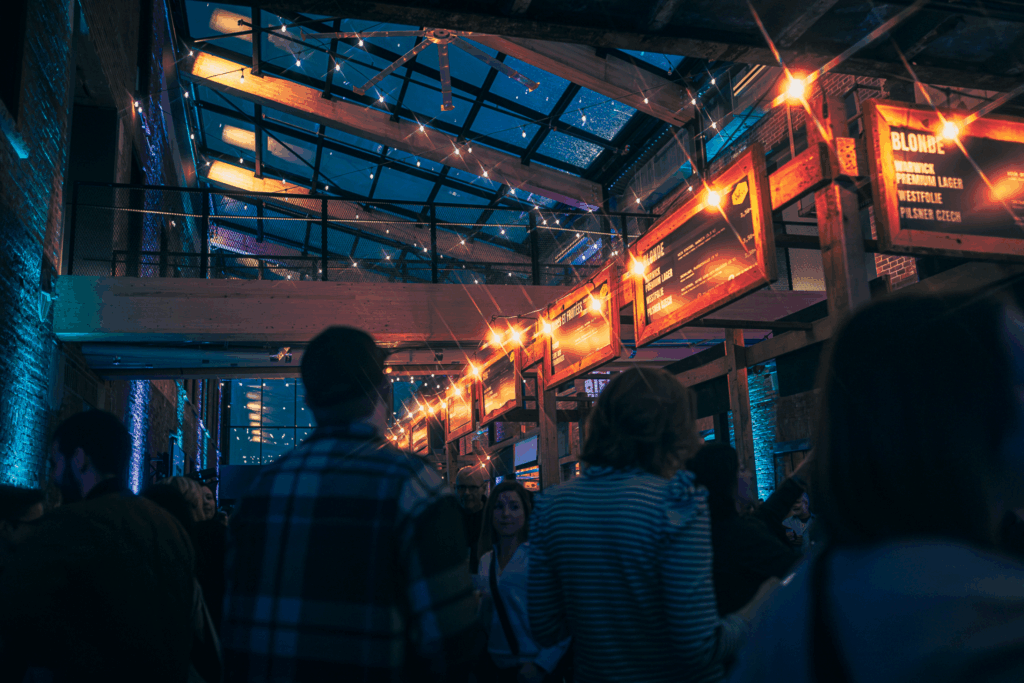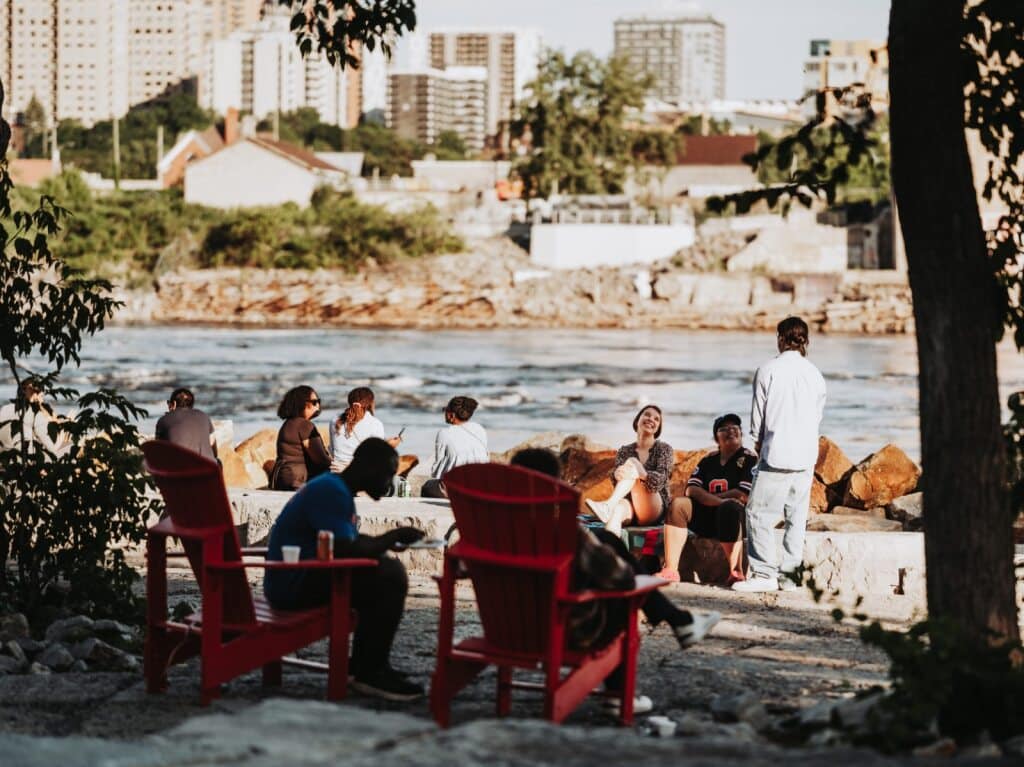Discover art at Zibi
In the spirit of reconciliation, one of Zibi’s primary goals when it started to redevelop the waterfront lands was to use the site to create a place that celebrated the culture of the Algonquin Nation, on whose territory the project finds itself. As part of this objective, Zibi committed to creating trilingual signage throughout the site, and to giving Algonquin names to many of its streets, parks and plazas. It also committed to showcasing Algonquin and Indigenous artworks throughout the site – inside and out.
Zibi has made a concerted effort to create a waterfront community that embraces and celebrates art in all its forms. Join us as we showcase the many Algonquin, Indigenous and non-Indigenous artworks featured throughout the community.
Find the map here.
FEATURED WORKS IN ZIBI’S PUBLIC PARKS AND SPACES
Zibi’s residents, visitors and onsite workers can find several artworks throughout the site, such as:
1. The benches and moons of Tesasini Park
Located on the North shore of the Ottawa River in Gatineau, Tesasini Park features benches inspired by the shell of the mikinàk (turtle) and in the shape of a lunar calendar, with 13 centre segments for each tibik-kizis (moon), and 28 smaller outer segments representing the days between each moon.
The 13 moons in nigopibòn (year) signify a plant, animal or event. They can vary by community and geography and are a fundamental way of connecting back to the land.
As you move along the path, you’ll discover a stone asin (rock) carved representation of each moon of the Algonquin Peoples carefully carved by Solomon King, a sculptor, stone artisan and mason from Neyaashiinigmiing unceded territory.

2. Water Woman, 2022
Wàsa Zibi Plaza
In Anishinaabe culture some beliefs speak of Sky Woman, a spiritual being who lived among the stars. She is known for bringing the seeds of life onto Turtle Island (North America). Water Woman by Naomi Blondin, an Algonquin and French-Canadian artist and member of the Kitigan Zibi First Nation, is an interpretation of this spirit and shows how women and their connection to water is so sacred. Like many strong Indigenous women, Water Woman is a water protector.

3. Makwa Bike Racks, 2021
Wàsa Zibi Plaza
The makwa bike racks located near Festival Plaza were created by Karl Chevrier, an Algonquin artist from Long Point First Nation.The makwa (adult bear) and makòns (bear cubs) have great significance in Algonquin culture and are tasked with security and carrying medicine in the traditional government system.

4. We Are Seeds, 2021
Eddy Street
Inspired by Dinos Christianopoulos’s proverb “They tried to bury us, they didn’t know we were seeds.”, We are Seeds, the 60ft Canadian Heritage mural on Eddy Street was brought to life by Latin Canadian artist Claudia Gutierrez and her assistant youth mentee Kiana Meness from Pikwakanagan First Nation.

FEATURED WORKS IN ZIBI’S RESIDENTIAL AND OFFICE SPACES
Zibi’s residents, visitors and onsite workers can also find several artworks within the residential and commercial spaces, such as:
5. A Land and Its People, 2024
Common at Zibi, Lobby
This piece by Annie Pillaktuaq, an Inuit artist born and raised in Iqaluit, Nunavut, includes all Indigenous peoples and settlers in Canada. The vibrant strips on the left and right represent the diverse settler groups coexisting alongside Indigenous communities. Pillaktuaq juxtaposes modern development, such as Zibi’s residential and commercial buildings, with traditional Indigenous symbols like a tipi and an igloo.

6. Untitled, 2009, 2018, 2020
Common at Zibi, Lobby
Qavavau Manumie is a renowned Inuit artist born and raised in Iqaluit, Nunavut whose work has had a profound influence on Inuit drawing and printmaking. Manumie is a master at blending traditional and contemporary elements. He subtly interweaves environmental, social, and cultural quandaries into his work, highlighting both the fantastical aspects of the Arctic ecosystem and the modern lifestyles of the Inuit.

7. Flowering
Common at Zibi, Coworking Lounge
“Flowering,” by Canadian mixed media painter Suny Jacob, portrays the complexity of the human condition through the journey of growth and self-discovery. The flowing ribbons represent life’s ever-changing paths, while the vibrant bouquet symbolizes the blossoming of inner potential amid challenges. Set against a deep blue background of fears, hopes, and mysteries, the dynamic forms and radiant colors celebrate resilience, diversity, and the beauty of becoming.

8. Synergy
Common at Zibi, Coworking Lounge
“Synergy,” by Canadian mixed media painter Suny Jacob, celebrates the vibrant interplay of movement, nature, and emotion through bold forms and vivid colors. The warm orange background exudes vitality, while dynamic lines and floral clusters symbolize resilience and harmony amid life’s chaos. Together, these elements evoke a sense of connection, freedom, and the joy of embracing life’s vibrant rhythm.

9. A Culture of Wealth
Aalto II, Lobby
“A Culture of Wealth,” by Annie Pillaktuaq, an Inuit artist born and raised in Iqaluit, Nunavut, reflects on the ways capitalism has influenced Inuit culture. In this work, Inuit myths, such as Sedna, are reinterpreted, while ancestors and spirits watch over the Inuit as they learn to process these influences and reconnect with their land amidst resource misuse and environmental degradation. Yet, all these resources remain part of the Inuit landscape, making them integral to the process of cultural (re)connection and reclamation.

10. Scintilla
Aalto II, Lounge
“Scintilla,” by Canadian mixed media painter Suny Jacob, captures the transformative power of light and growth emerging from the depths of darkness. Scintilla invites viewers to consider how a spark can stoke one’s inner fire and reshape perception. Drawing inspiration from her South Indian heritage, Jacob’s work features rich colours that tell a story in themselves. The word “scintilla” means “spark” or “tiny particle of fire.”

11. Across the Skies, 2021
Aalto II, Lounge
Wayne McKenzie, an Algonquin/Cree painter from Timiskaming First, is a self-taught artist who uses bold colors and confident lines, resulting in a body of work that exudes cheerfulness and spirit. McKenzie sees his work as a resource for viewers to learn about the Anishinaabe way of life and to honor the Indigenous peoples of Canada.





